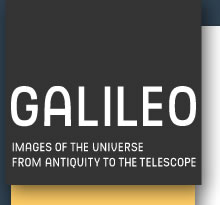


According to tradition, Pythagoras was the first to hear the symphony of the planets, recognising a similarity between the sounds of the celestial spheres and those made by a hammer striking an anvil. Using a monochord, he is said to have determined the numerical ratios corresponding to the musical concordances: 1/2 for the octave, 2/3 for the fifth and 3/4 for the fourth.
The Greek world compares the cosmos to a musical scale where the highest sounds are attributed to Saturn and to the heaven of the fixed stares. The Sun is indispensable for the realisation of harmony, since it corresponds to the central note that link two tetrachords, that is, two scales each composed of four sounds.
The medieval interpretation of cosmic harmony depended on the Biblical passage, 'The heavens shall sing the glory of God' and on the sapiential triad based on which God had created the universe according to the numbers of arithmetic, the measurement proper to geometry and the weight of music. God is thus the supreme Geometer and Musician. In the frontispiece to a work by a famous Jesuit, the angels form a 36-voice choir, which celebrates celestial harmony and the harmonic structure of creation.
The order of the Christian cosmos is expressed by the harmonic composition of the four elements frescoed in the Cathedral of Anagni. The two extremes of earth and fire are tempered by the proportional means of water and air: air is subtle like fire; mobile like fire and water; and thick like water and earth. Water too is likened to the other three elements, while earth and fire are always opposed.
Belief in the harmony of the spheres assumed a decisive role in the cosmology of Johannes Kepler. Kepler goes beyond Copernicus' static model of circular spheres to hypothesise a dynamic one. He transforms into ellipses the orbits traversed by the planets at variable speed. He attributes to each planet not a single sound, but an interval in which the lowest note corresponds to minimum velocity, the highest to maximum. The staves represent the harmonic structure of the cosmos acoustically; the amplitude of the intervals is directly proportional to the eccentricity of the planets.
Parallel to the Pythagorean tradition, there develops the magical-hermetic vision of harmony, culminating in Rober Fludd's concept of the monochord. The spheres of the four elements, of the planets and the angels are arranged vertically on the monochord tuned by the Divine hand. A precise correspondence between levels of reality and musical consonances is thus established.
A similar model had been conceived by Franchino Gaffurio, who had collocated the planets around an ideal musical chord, according to a scale performed by the Nine Muses, accompanied by the Three Graces and directed by Apollo.
According to Ptolemy, the perfect harmony of the heavens is reflected in the three consonances internal to the circle of the zodiac, in which the musical proportions derive from the ratio between the arcs subtended by the diameter, corresponding to the octave; the sides of a triangle, corresponding to the fifth; and the sides of a square, corresponding to the fourth.
Man himself is enclosed within this circumference where the harmony of the planets, the seasons, and the song of the Muses act on both the external microcosm and the internal one.
Exactly like the man-zodiac, the 'man-monochord' also resounds on the basis of occult sympathies with the cosmos. Well-proportioned sounds contribute to the health of the body and soul, re-establishing equilibrium among the passions and tempering humours. Perfect equilibrium is attained both by listening to music and by attracting the influx of the planets with musical compositions reflecting the harmonic structure of the celestial concert. The Christian tradition also sees in the harmonic order of the spheres the possibility of undertaking a journey of ascent toward the Creator.
The harmony of the spheres thus becomes the unifying principle of reality. Instrumental music favours the tempering of the passions, while the order of the planets is the model for social and political concord.